Xiaomi POCO F6 Pro – A newbie in the Aussie smartphone market (review)

The Xiaomi POCO F6 Pro and the POCO F6 are new entrants into the Australian market. Potential buyers need to know much more before parting with the green stuff for these excellent phones.
Hopefully, this deep-dive review will assuage any concerns, but be aware that you will be an early adopter or someone who appreciates ‘speeds and feeds’ specs for what appears to be excellent value.
For example, these phones are still very much ‘Chinese’ market-oriented, with their Xiaomi HyperOS overlaid on Android 14, which contains way too much bloatware (not malware). There are also proprietary loaders and a learning curve from pure Android or other Australianised user interfaces.
We had the choice of the Xiaomi POCO F6 Pro (SD 8 Gen 2—this review) or the F6 (SD8s Gen 3—hopefully another review). This was a 16GB/1TB version with Australian firmware. Test results should not significantly differ from the base 12GB/512GB.
Xiaomi POCO F6 Pro basic specs
| XIAOMI POCO F6 | XIAOMI POCO F6 Pro | |
| Official Website* | Official Xiaomi Australian website Product Page | Product Page |
| Price (RRP 23/9/2024) | $699 (Black, Green, and Titanium) | $999 (Black or White) |
| Screen | 6.67” AMOLED 500/2400 nits 2712 x 1220 446ppi GG Victus | 6.67” AMOLED 700/4000 nits 3200 x 1440 526ppi GG5 |
| Processor | SD8s Gen 3 Adreno 735 | SD8 Gen 2 Adreno 740 |
| RAM/Storage | 8GB LPDDR5X 256GB UFS 4.0 | 12GB LPDDR5X 512GB UFS 4.0 |
| Rear Camera | 50+8 4K@60fps | 50+8+2 8K@24fps |
| Selfie | 20MP | 16MP |
| Comms | Wi-Fi 6, BT 5.3, GPS, NFC | Wi-Fi 7, BT 5.3, GPS, NFC |
| Battery | 5000mAh 90W capable | 5000mAh 120W capable |

First impression – well-made, high specs, decent price
POCO is a mid-range brand offering higher specs and fewer compromises than the value Xiaomi Redmi level. The brand philosophy is ‘Everything You Need, Nothing You Don’t’.
The Xiaomi POCO F6 Pro has a 12-bit/68 billion colour 6.67” 120Hz AMOLED (the first I have seen), the 2023 Snapdragon SD8 Gen 2 (to save some costs), tri-camera sensors, and the base model has 12GB RAM and 512GB storage.
The review model came with a massive 20V/6A/120W Type C pin charger (not approved for use in Australia) and a 6A USB-to-USB-C cable that charges 100% in 19 minutes (in Boost charge mode, screen off). You can purchase a 20V/3.25A/65-67W Xiaomi Gan Charger with USB-A and USB-C ports for $49 or use any PPS or PD 3.0 charger—the higher the wattage, the faster it charges.
It appears well-made with an alloy frame, Gorilla Glass 5 front and back and a two-year warranty. Service for Australian-approved models is in Sydney.
What about Xiaomi Australia?
CyberShack has met Xiaomi Australia’s managing director and its head of mobile. They are committed to building the brand in Australia. Xiaomi is fighting it out globally with Samsung as the largest or second-largest Android phone supplier, and Australia is a key growth market.
However, as alluded to earlier, this is not a typical Android experience. Android is there, but the HyperOS launcher is a heavy overlay with many apps or functions specific to Xiaomi and Chinese markets.
The good news is that you don’t have to establish a Xiaomi account to use the phone’s main features. We strongly recommend downloading and using all the Google apps where possible, as they make backup and transfer so much easier. The privacy and use policies are at the end of the review and have not been modified for Australian use. As you don’t need a Xiaomi account, they are irrelevant.
Finally, do not accept all website claims at face value. In true Chinese tradition, claims or marketing jargon may infer superior performance. For example, the Light Fusion 800 image sensor is, in fact, an Omnivision OVX8000 sensor (based on the OV50E, which is pretty good).
Pretty well, every Chinese maker indulges in hyperbole, and our job is to demystify the terms.
Australian Review: Xiaomi POCO F6 Pro, dual sim, 12/512GB (16GB/1TB as tested)
| Brand | Xiaomi POCO |
| Model | Xiaomi POCO F6 Pro |
| Model Number | 23113RKC6G (16GB/1TB review model) |
| RAM/Storage Base | 12/512GB |
| Price base | $999 |
| Warranty months | 24 months ACL for genuine Australian-certified devices. |
| Tier | Premium mid-range |
| Website | Xiaomi POCO AU site POCO AU product page (note: many links do not work) POCO global site product page (links all work) |
| From* | Xiaomi AU website only. See warming regarding the grey market. |
| Country of Origin | China |
| Company | POCO is an independent brand that was born out of the Xiaomi Corporation. It has entered more than 35 global markets. It is a consumer technology brand based on the philosophy of ‘Everything you need, nothing you don’t’ with a key focus on its POCO fans’ requirements. |
| More | CyberShack smartphone news and reviews |
| Test date | September 2024 |
| Ambient temp | 10-27° |
| Release | It was announced in May and released in September 2024 in Australia. |
| Other models not for Australia (Don’t buy) | Please read the warning about the grey market, which is particularly relevant to Xiaomi. |
Grey Market warning*
Xiaomi is one of the world’s largest Android phone makers, with Redmi (value), POCO (mid-range), and a premium range not yet sold here.
As such, it is extensively grey marketed and imported through companies like Spectronic, Best Mobile, Becextech, MyMobile, Kogan/Dick Smith/Matt Blatt/Mighty Ape Marketplace, Amazon Marketplace, eBay, AliExpress, Terchinn, Bangood and many, many more. Also, avoid the so-called Xiaomi Australia (mi-store.com.au) and Panmi (panmi.com.au/brands/xiaomi/), which claim to be authorised distributors, as they are no longer.
GREY MARKET PHONES ARE NOT CERTIFIED FOR USE ON AUSTRALIAN TELCO NETWORKS AND WI-FI 6 AND 7 NETWORKS. THEY DO NOT HAVE AN AUSTRALIAN WARRANTY AND THE IMPORTANT R-NZ C-TICK ELECTRICAL CERTIFICATION.
Read Don’t buy a grey market smartphone. You can check for the R-NZ C-Tick on the charger and under Settings, About Phone and Certification.
Screen – 12-bit, 68 billion colours and pin sharp – Exceed
It is a 6.67”, 3200 x 1440, 526ppi, 12-bit/68 billion colour, 120Hz, AMOLED display. It is the first 12-bit we have encountered and probably the best and sharpest we have ever seen.
It has an astounding 4000 nits 2% window peak for Dolby Vision. It is very bright for daylight use, and the screen typically is between 700 and 1200 nits on auto brightness mode.
The great news is that it has a very high PWM threshold at 3840Hz dimming – no issue for PWM-sensitive people.
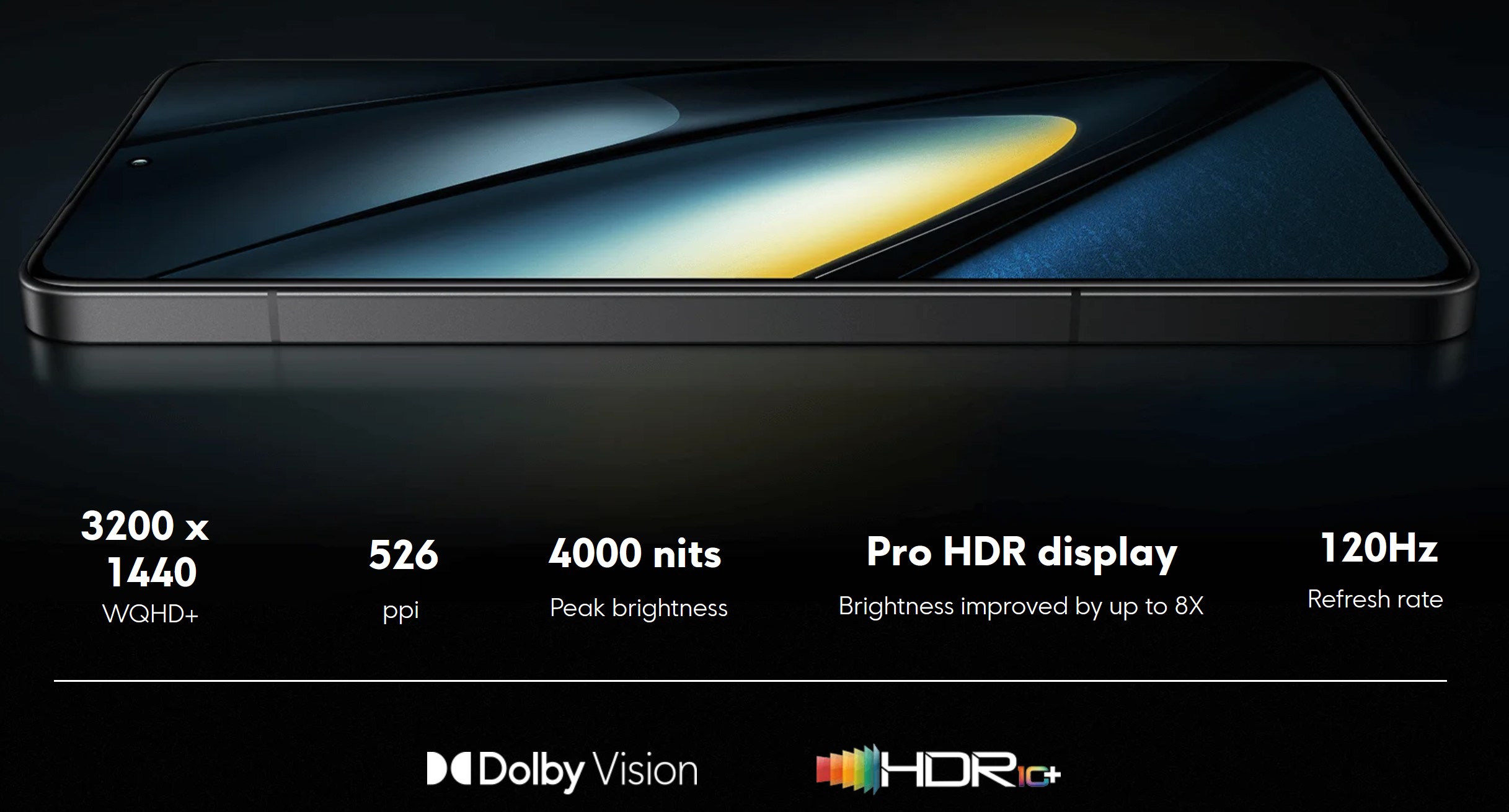
68 billion colours – huge
A little background.
- 8-bit colour (256 brightness levels) with RGB means 16.7M colours. Samsung, Google Pixel, and lower-cost phones use 8-bit. Why? It uses less energy. However, it cannot reproduce the wide colour gamut needed for Dolby Vision content and has noticeable banding of colour gradients. These screens are not colour-accurate for 10-bit photo and video previews.
- 10-bit colour (1024 brightness levels) used in HDR/HDR10/Dolby Vision means 1.07B colours—a wide DCI-P3 gamut. Motorola and OPPO use this in their OLED/pOLED screens, and the colours and image preview are superb. Dolby Vision is downmixed from 12-bit native to 10-bit.
- 12-bit colour (4096 brightness levels) means 68B colours. Dolby Vision is displayed in native 12-bit. Colours and image preview are superb.
Xiaomi appears to be the first to use 12-bit screens, and these are the first to score a DisplayMate A+ rating, breaking or matching 15 previous records. Xiaomi factory calibrates the panels for 100+% sRGB and DCI-P3. As you will see in the table below, they are also fully calibration-compatible (most phones are not).
Screen specs
| Size | 6.67″ |
| Type | AMOLED |
| Flat, Curve, 2D, 3D | Flat with centre o-hole |
| Resolution | 3200 x 1440 or 2400 x 1080 (default) |
| PPI | 526 |
| Ratio | 20:9 |
| Screen to Body % | 90% |
| Colours bits | 12-bit/68 billion colours – read more on what this means. |
| Refresh Hz, adaptive. | Auto (default) 60/90/120Hz stepped. Custom: select 60 or 120Hz. It is not LPTO 1-120Hz. |
| Response 120Hz | Up to 480Hz and wet glove mode. |
| Nits typical, test | Typical: 700 (Test 715) Whole of Screen HDR/DV: 1200 (Test 1290) |
| Nits max, test | Peak Dolby Vision brightness 2% window: 4000 (verified) |
| Contrast | Infinite |
| sRGB | It has Original Colour Pro (closest calibration), Vivid, Saturated, and Advanced settings to select Original, DCI-P3 and sRGB, RGB, HUE, Saturation, value, contrast and gamma. 100+% sRGB |
| DCI-P3 | 100+% DCI-P3 It was measured at 10-bit/1.07 billion colours. We cannot test 12-bit yet. |
| Rec.2020 or other | It is likely calibrated to almost the entire colour gamut. |
| Delta E (<4 is excellent) | 1.2 |
| HDR Level | HDR, HDR10, HDR10+, Dolby Vision and HLG |
| SDR Upscale | AI image engines can upscale video resolution, enhance HDR, and add motion smoothing. |
| Blue Light Control | Yes |
| PWM if known | Up to 3840Hz PWM at <24 nits – well outside the PWM-sensitive range. If PWM dimming is disabled, it has the typical 120/2350Hz recurring PWM. |
| Daylight readable | Yes, and you can select Sunlight mode for 700+ nits. |
| Always on Display | Yes, and highly customisable themes and wallpaper. |
| Edge display | No |
| Accessibility | Usual Android 14 plus Xiaomi enhancements |
| DRM | L1 1080p SDR and HDR/Dolby Vision certified (some streaming services support this) |
| Gaming | <2ms response time and a potent processor make this ideal for most mobile games. |
| Screen protection | Pre-applied TPM protector – Mohs hardness 2-3. Gorilla Glass 5 – Mohs hardness 5-6. |
| Comment | This is a spectacular screen with pin-sharp definition and terrific colour accuracy. We have not encountered a 12-bit screen previously, but as far as we can see, it offers slight image improvement over a 10-bit panel. |
Processor–inspired choice – Exceed
In some ways, the Qualcomm SD8 Gen 2 is a better processor than its Gen 3 version. It has four Xiaomi performance modes: Performance, Balanced, Battery Saver, and Ultra Battery Saver, which can extend battery life to a week.
In an AI sense, it is close to the Pixel 9 series as it is the first SnapDragon with a dedicated NPU. You should be able to do anything the Pixel 9 series does. Google Gemini is installed.
The only disappointing note is the USB-C 2.0 480Mbps OTG port. This would have been perfect for vloggers if it supported an external mountable SSD.
Coming soon via OTA, gamers will appreciate Xiaomi’s WildBoost Optimisation 3.0, which gives higher frame rates, stable brightness, and efficient cooling to ensure smooth and immersive gameplay. The Adreno 740 GPU has Real-time Hardware-Accelerated Ray Tracing, delivering authentic light, reflections, and illuminations for desktop-level gaming experiences.
Summary: Last year’s flagships at a less-than-flagship price.
Processor specs
| Brand, Model | Qualcomm SD8 Gen 2 |
| nm | 4nm TSMC N4P |
| Cores | 1 x 3.2GHz & 2 x 2.8GHz & 2 x 2.8GHz & 3 x 2.0GHz |
| Modem | X70 5G |
| AI TOPS OR Multi-thread Integer Operations Per Second (INOPS) GINOPS = billion | On charge Geekbench AI CPU backend 990/1016/1878 Geekbench A! GPU backend 734/1000/953 Geekbench AI NNAPI backend 253/240/561 Geekbench AI QNN backend 245/11267/25604 AiTuTu 1,056,264 AI Benchmark 2439 GFLOPS 14.24 GINOPS 18.53 |
| Geekbench 6 Single-core | 1171 Balanced Mode 1995 Power mode |
| Geekbench 6 multi-core | 3995 Balanced mode 5750 Power mode |
| Like | Benchmarks |
| GPU | Adreno 740 with hardware ray tracing support |
| GPU Test | |
| Open CL | 7056 |
| Like | Above SD8 Gen 1 and below SD8 Gen 3. |
| Vulcan | 7495 |
| RAM, type | 12GB LPDDR5X plus up to 8GB virtual RAM |
| Storage, free, type | 512GB UFS 4.0 (fastest) |
| micro-SD | No |
| CPDT internal seq. Read MBps sustained | 1110 – sustained reflects fast UFS 4.0 Jazz Disk theoretical speed 2089.8 |
| CPDT internal seq. write MBps sustained | 974 sustained Jazz Disk theoretical speed 1501.47 |
| CPDT microSD read, write MBps | N/A |
| CPDT external (mountable?) MBps | 29.61/28.10 OTG not mountable. |
| Comment | The SD8 Gen 2 is an inspired choice—it is the 2023 powerhouse processor of choice and offers excellent performance. It has an NPU to support AI enhancements matching the Google Pixel 9/Pro in AiTuTu and is 4X faster in the Geekbench AI QNN backend. |
Throttle test – Exceed
More jargon, but its LiquidCool 4.0 technology results are impressive. It incorporates a new ‘IceLoop’—basically a copper vapour chamber cooling solution that keeps the hot SD8 Gen 2 cool and stable under load.
| Throttle test | Balanced/performance modes |
| Max GIPS | 338542/384500 |
| Average GIPS | 313489/321317 |
| Minimum GIPS | 274896/275351 |
| % Throttle | 12/12% |
| CPU Temp | 62/59° |
| Comment | SD8 SoCs run pretty hot, and POCO has done a fantastic job with thermal management. We repeated the test on balanced and performance modes, and the latter showed even better heat management. |
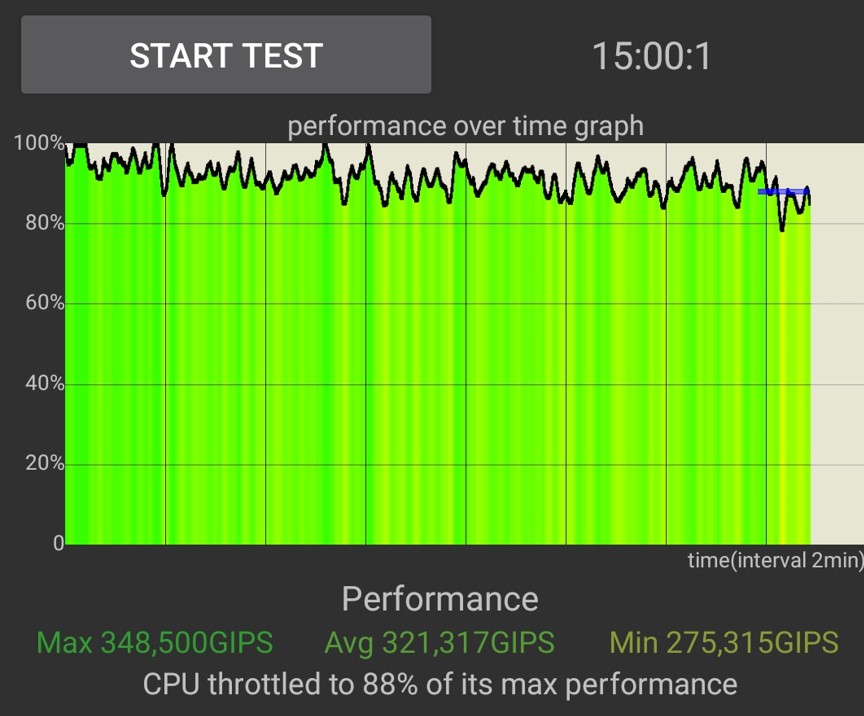

Comms – Pass+
Apart from USB-C being 2.0 480Mbps, this has everything you need. Wi-Fi 7 6GHz speeds are 2900/2900 (maximum without using MLO, which may come with a firmware update) and are strong out to 10m.
GPS is a tri-band for world location.
It even has an IR blaster to control IR devices like TVs.
Comms specs
| Wi-Fi Type, model | Wi-Fi 7 BE Tri-band. Supports up to 5800Mbps 320MHz MLO (firmware update to come). All tests on 6GHz band |
| Test 2m -dBm, Rx/Tx Mbps | -44/2900/2900 – maximum at present |
| Test 5m | -47/2900/2900 |
| Test 10m | -56/1585/1489 |
| BT Type | 5.3 |
| GPS single, dual | Triple band Beidou: B1I+B1C+B2a | GPS: L1+L5 | Galileo: E1+E5a | GLONASS: G1 | QZSS: L1+L5 | NavIC: L5AGNSS | Data network | Wireless network | Sensor Assisted Positioning |
| USB type | USB-C 2.0 OTG (no audio/video alt DP) |
| ALT DP, DeX, Ready For | No |
| NFC | Yes |
| Ultra-wideband | No |
| Sensors | |
| Accelerometer | Yes |
| Gyro | Yes |
| e-Compass | Yes |
| Barometer | No |
| Gravity | No |
| Pedometer | Emulated |
| Ambient light | Yes |
| Hall sensor | Emulated |
| Proximity | Yes |
| Other | IR Blaster Flicker Sensor |
| Comment | It has all the goodies but is hobbled by not implementing USB-C 3.2 Gen 1 or Gen 2 with Alt DP for external monitor support. OTG speeds are too low to use an external SSD. |
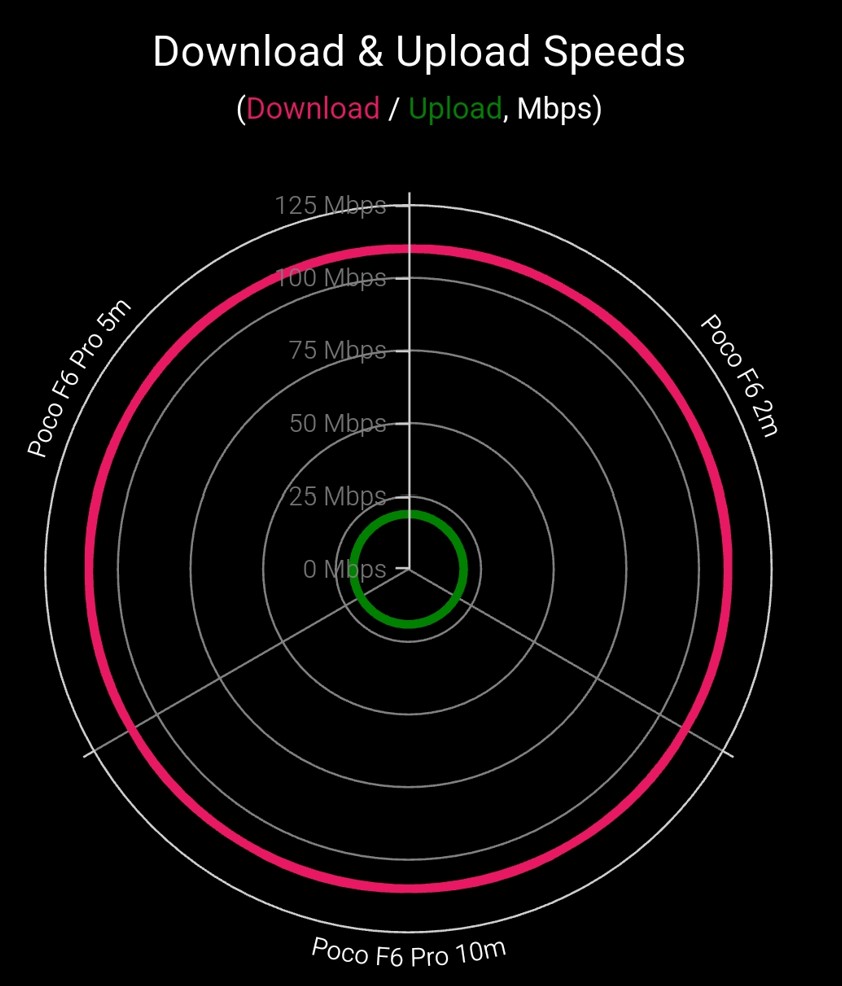


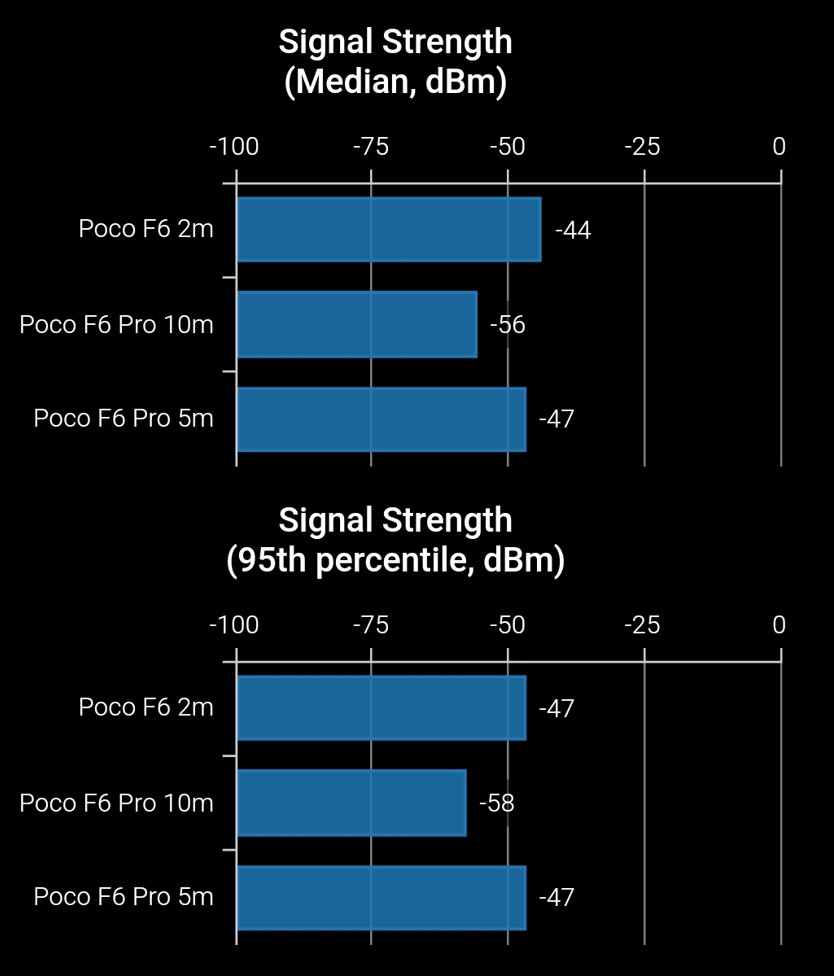

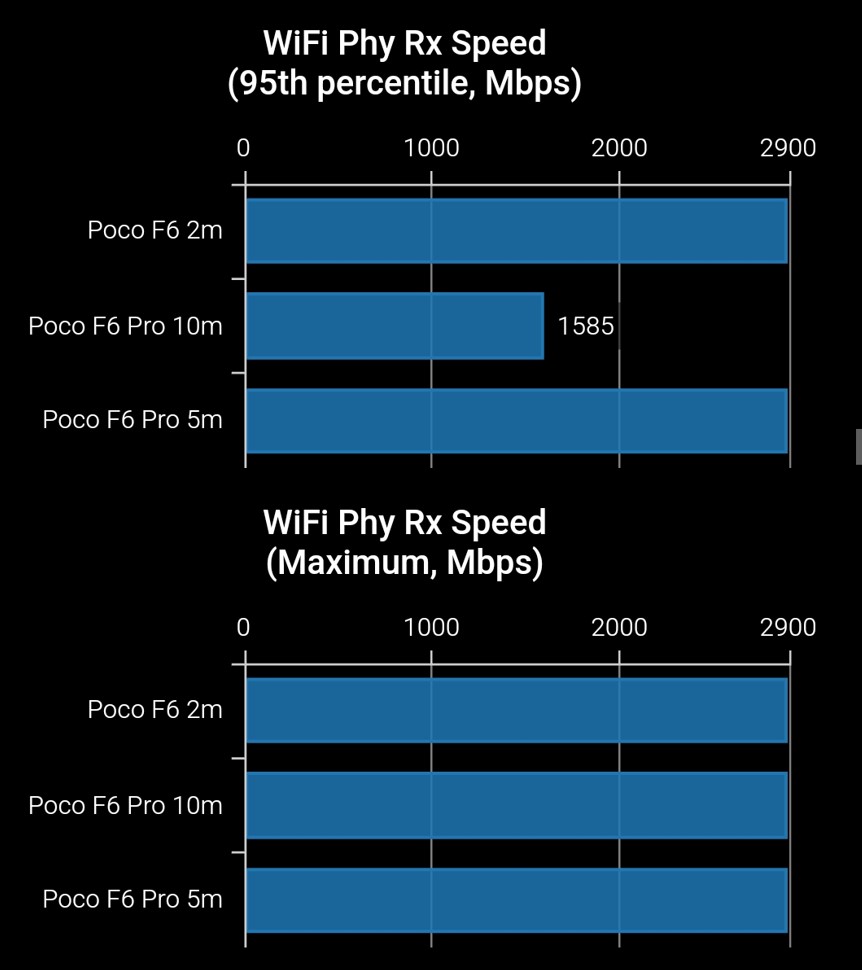


4/5G – Exceed
We do not often award Exceed to phone reception, but this suits cities, suburbs, regional towns, and rural areas (if Telstra Band 28 is available).
This phone is also the first in our tests to find a usable 5G signal – others tested to date found 5G at unusable strengths.
Our only issue is that it does not have eSIM, which is gaining popularity in Australia.
4/5G specs
| SIM | Dual SIM (no eSIM) |
| Active | The SoC supports DSDA (dual SIM, dual active) |
| Ring tone single, dual | Single |
| VoLTE | Yes |
| Wi-Fi calling | Yes |
| 4G Bands | Australian version only 1/2/3/4/5/7/8/18/19/20/28/38/40/41/66 |
| Comment | Close to a world phone |
| 5G sub-6Ghz | Australian version only n1/3/5/7/8/20/28/38/40/41/77/78 |
| Comment | All Australian sub-6 bands but not a world phone |
| mmWave | No |
| Test Boost Mobile, Telstra | |
| DL/UL, ms | 4G 39.4/10/39ms – average 5G 158.1/34.5/17ms – excellent |
| Tower 1 -dBm, fW or pW | 4G -80 to -86 2.5pW to 10pW ‘5G -93 to -102 501.2fW to 79.4fW and usable |
| Tower 2 | 4G -81 7.9pW ‘5G N/A |
| Tower 3 | 4G -83 5pW |
| Tower 4 | 4G -91 794.3fW |
| Comment | This has strong and reliable 4 and 5G reception. It is suitable for a city, suburb, regional town and rural areas (if there is 4G band 28 tower coverage) |
Battery – Pass+
This is a 1000-cycle recharge battery, after which still holds 90% capacity (most are 300-500, except certain OPPO phones, which use 1600-cycle batteries).
It is partly due to the battery quality (5 years) and the use of a dedicated P2 charging and G1 Surge battery management chipset.
It does not have Qi wireless charging.
Battery specs
| mAh | 5000mAh/19.45Wh |
| Charger, type, supplied | Not supplied. The 120W Xiaomi fast charge charger is not Australian-approved; you can use any 120W GaN charger. A Xiaomi 67W GaN charger is $49.99 (as tested) |
| PD, QC level | PD 3.0 or PPS |
| Qi, wattage | N/A |
| Reverse Qi or cable. | N/A |
| Test (60Hz or adaptive screen) | Refresh rate default 60/90/120Hz. Balanced power mode. |
| Charge % 30mins | Not tested. |
| Charge 0-100% | 1 hour 10 minutes with 67W Xiaomi GaN charger 1 hour 33 minutes using 65W Belkin GaN charger |
| Charge Qi | N/A |
| Charge 5V, 2A | 4 hours |
| Video loop 50%, aeroplane | 14 hours |
| PC Mark 3 battery | 18 hours 36 minutes Accubattery is theoretically 18 hours. |
| GFX Bench Manhattan battery | 437.4 minutes (7.29 hours) 3139 frames |
| GFX Bench T-Rex | 625.1 minutes (10.42 hours) 3262 frames |
| Drain 100-0% full load screen on | 4 hours 7 minutes Accubattery theoretical 4 hours 48 minutes |
| mA Full load screen on | 2250-2300 – fairly heavy battery use under load. |
| mA Watt idle Screen on | 300-350 – slightly above average use but reflects the 12-bit screen. |
| Estimate loss at max refresh | N/A |
| Estimate typical use | Most users will get 20-24 hours of use. Heavy users will get between 8-10 hours of use. |
| Comment | It has good video loop times for a powerhouse processor, but this is the least demanding test. It draws quite a lot of power under load but has average power when idle. |
Sound hardware – Pass+
This is the first we have seen with a full range of Qualcomm aptX codecs and supports Auracast.
What is Auracast?
Auracast allows an audio signal from a transmitter (e.g., tour guide systems in museums, public address systems and increasingly in TVs or smartphones) to be transmitted to unlimited receiving devices (e.g., headphones, hearing aids) within a fixed transmission radius.
In addition to Qualcomm Snapdragon sound, it has two separate amplifiers to ensure a balance between the top and bottom speakers.
Sound specs
| Speakers | Stereo earpiece and down-firing speaker. |
| Tuning | N/A |
| AMP | Qualcomm Snapdragon sound 2 x AW882 x 2W (THD 1% at maximum volume) |
| Dolby Atmos decode | Yes, and Xiaomi Sound (whatever that is) |
| Hi-Res | 24-bit/48000Hz |
| 3.5mm | FSA4480 UDB-C DAC |
| BT Codecs | SBC, AAC, aptX, aptX HD, aptX TWS, aptX Adaptive, LDAC, LHDC V2/3/5. May support AURACAST. |
| Multipoint | Yes |
| Dolby Atmos (DA) | Yes |
| EQ | Custom, Rock, Jazz, Pop, Classical, Hip Hop, Blues, Electronics, Metal. |
| Mics | 2 – one is for noise cancelling. |
| Test dB – all on EQ flat DA off | |
| Volume max | 84.2 |
| Media (music) | 74 |
| Ring | 74 |
| Alarm | 74 |
| Notifications | 74 |
| Earpiece | 55 – No separate volume control |
| Hands-free | It is quite loud, but limited noise cancellation means taking/making calls inside. |
| BT headphones | Average volume and channel separation. Full range of BT codecs. |
Sound quality – Passable
Great hardware, but lousy sound tuning makes music thin, harsh, and tinny regardless of EQ settings. However, the late mid sound signature is fine for a clear voice.
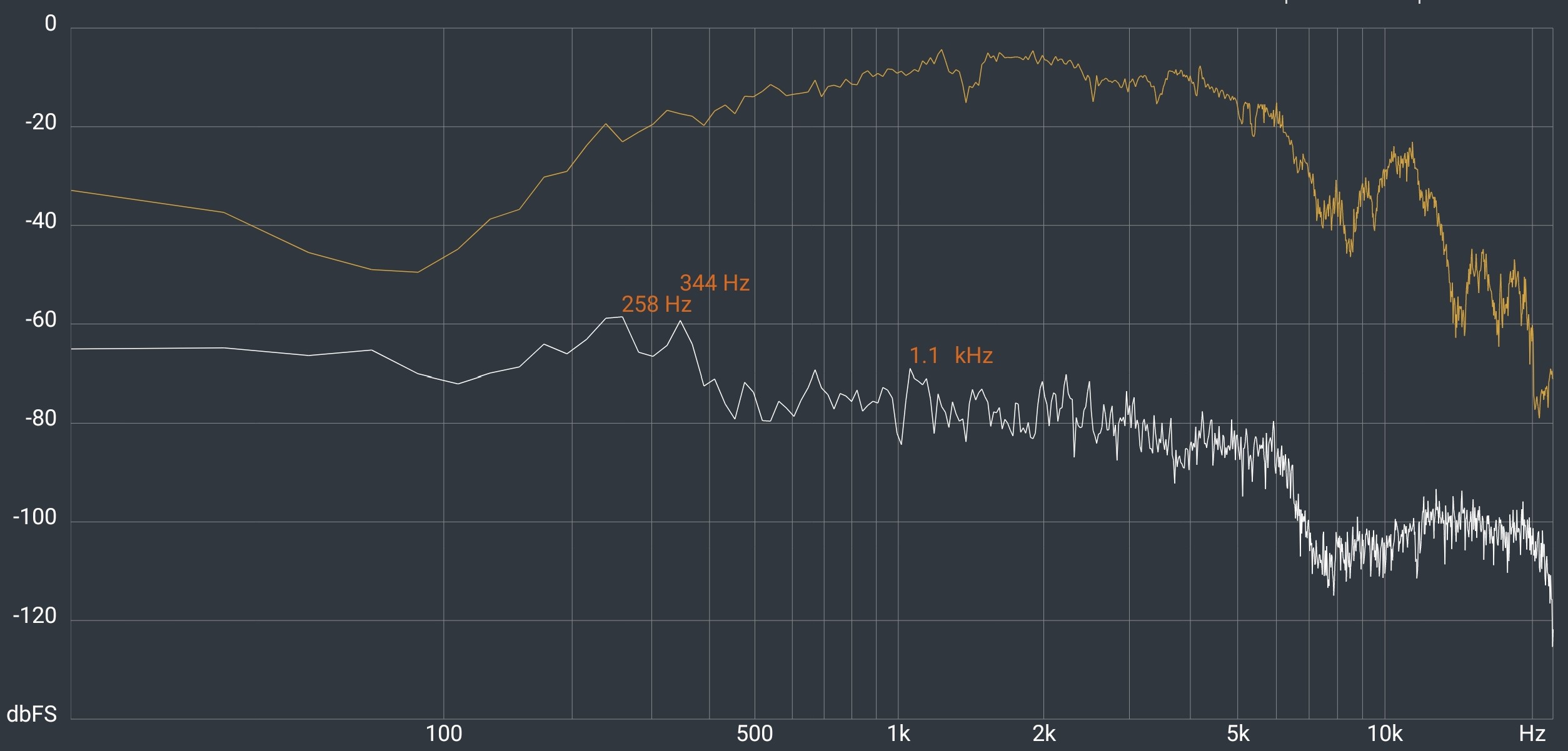
We tested with Dolby Atmos (DA) content, and the sound stage widened and gave some 3D height, but the sound signature remained essentially the same.
DA via headphones is superb, and the inbuilt USB-C headphone DAC helps.
| Deep Bass 20-40Hz | Nil |
| Middle Bass 40-100Hz | Nil |
| High Bass 100-200Hz | Slow linear climb to 1kHz |
| Low Mid 200-400Hz | Slow linear climb to 1kHz |
| Mid 400-1000Hz | Slow linear climb to 1kHz |
| High-Mid 1-2kHz | Flat |
| Low Treble 2-4kHz | Flat |
| Mid Treble 4-6kHz | Flat |
| High Treble 6-10kHz | Dip to 8kHz followed by a slight increase to 10kHz |
| Dog Whistle 10-20kHz | Off the cliff |
| Sound Signature type | Mid for clear voice. Music quality lacks any bass or treble and lacks any vitality. |
| Soundstage | As wide as the phone. DA and spatial content give a slight widening and some 3D height. |
| Comment | It is easy to be a ‘harsh’ judge, but most phones are no better. This has a decent balance between the speakers and decent left-right separation, but the micro-speakers cannot do more. |
Build – Pass+
It would have received Exceed, except it lacks the IP68 water resistance that some other phones in this category have.
| Size (H X W x D) | 160.86 x 74.95 x 8.21 mm (camera bump takes that to 11mm) |
| Weight grams | 209g |
| Front glass | Gorilla Glass 5 and TPM screen protector |
| Rear material | GG5 |
| Frame | Alloy |
| IP rating | IP54 – better than nothing – splash resistant. |
| Colours | White or Black marble-like finish |
| Pen, Stylus support | No |
| In the box | |
| Charger | No |
| USB cable | 6A USB-C cable (this is a keeper) |
| Buds | No |
| Bumper cover | Yes – Ugly black TPU that covers a lovely marble finish! |
| Comment | Use any PPS or PD charger 45W+ and 5 or 6A cable. |
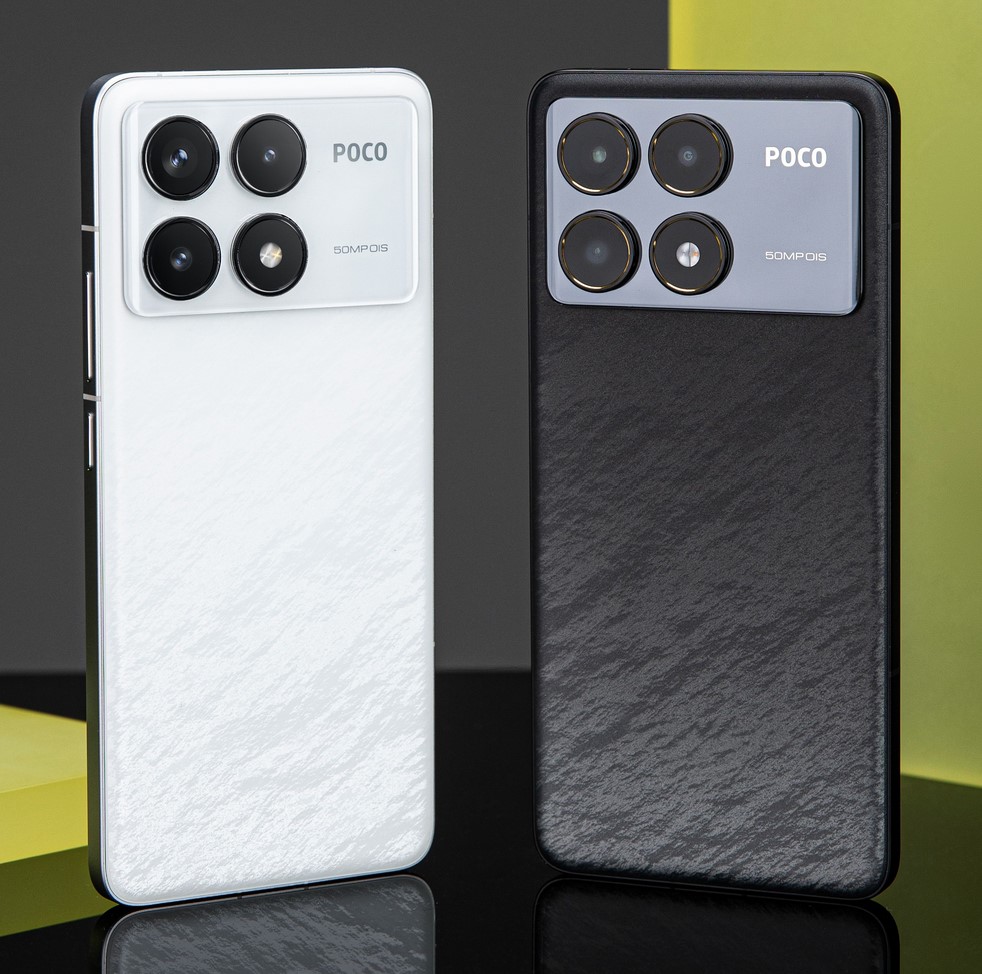
Xiaomi POCO F6 Pro Teardown: Beautifully made, 8/10 repairability
Android 14 – Interesting but quirky
It has a July security patch (almost out of date) and promises three OS upgrades and four years of security patches. This is quite reasonable for this price, but companies including Samsung (S24 series) and Google (Pixel 8 and 9 series) now offer seven OS upgrades and seven years of security patches).
The AI-powered features include
- AI Portraits using generative AI to create photorealistic portraits with a subject’s face.
- AI Expansion can extend images with the help of AI.
- Ai Magic Erase Pro removes objects from images.
- Ai Album Search quickly finds relevant photos.
- AI Subtitles can do real-time transcribing on videos and as real-time voice translation or transcribe your memos into text notes.
Some of these AI features might not be available in all regions (not tested).
A long press of the power button brings up Google Gemini.
HyperOS 1.0.5
Most Australians will not have seen this OS. It is heavily skinned with icons quite different from those we are used to. It seems like an early work in progress taking over from its Xiaomi MIUI. The guide is here.
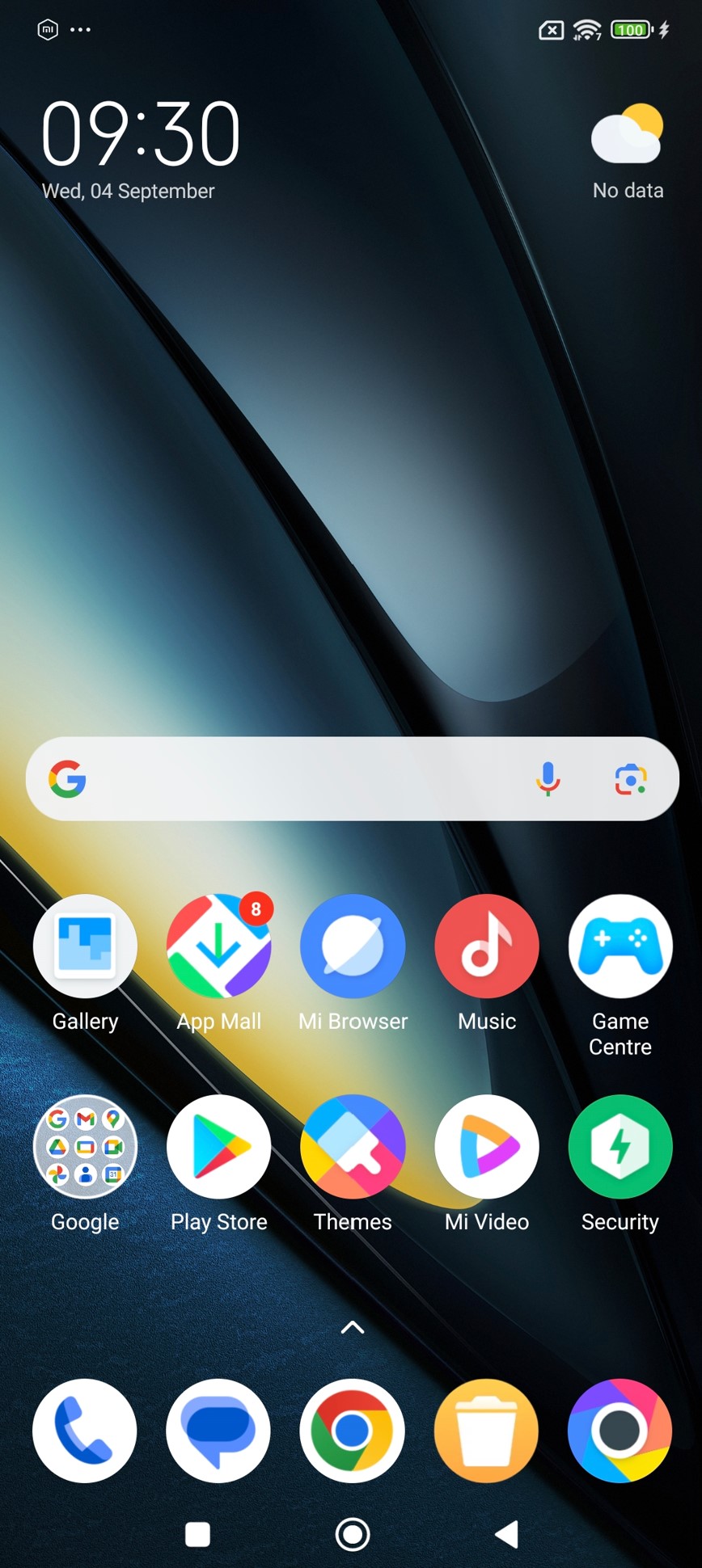

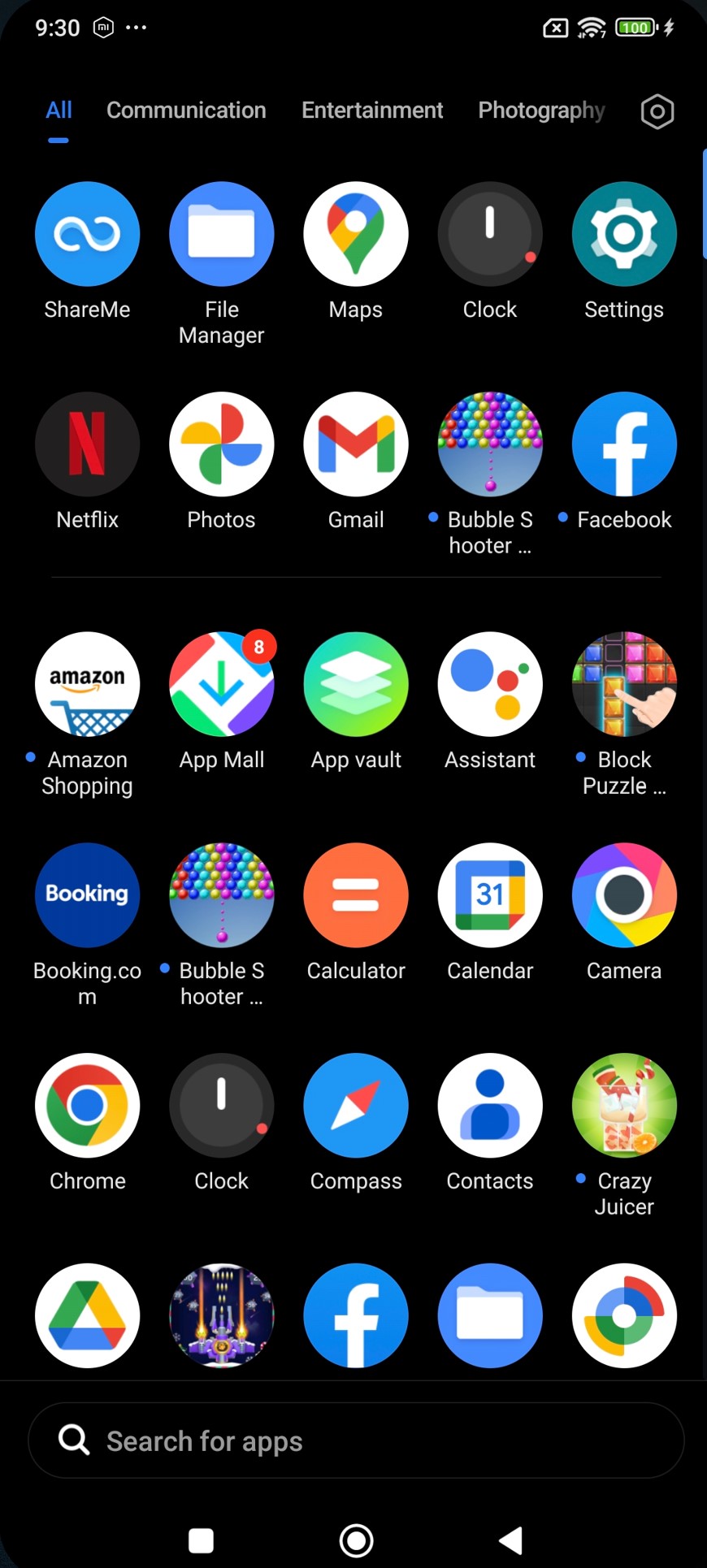
We first suggest deleting the 40 or so games and bloatware it can install by default. You won’t need its App Mall (Play Store equivalent) either. That has 2.2GB of recommended bloatware and thousands of apps that will never appear on the Google Play Store.
Our second suggestion is to download/install Google apps (most are in the Google Folder) to replace Xiaomi apps, mainly for Chinese use. That way, you can use Google Backup.
There are cute animations and themes – all chewing battery life. Use these if you wish.
It also has menu items you haven’t seen. One is called interconnectivity and is about the Mi ecosystem, which is not widely used here.
It also serves advertisements for apps. I have not worked out how to disable that, but it portends things to come.
If you are unwilling to risk HyperOS, then OPPO’s ColorOS 14 and Motorola’s Hello UX are light overlays on Android 14.
I advise Xiaomi Australia to look at a much lighter UI over Android for global markets.
OS Specs
| Android | 14 |
| Security patch date | 1 July 2024 (this is verging on being out of date) |
| UI | HyperOS 1.0.5 |
| OS upgrade policy | Three years |
| Security patch policy | Four years |
| Bloatware | It is a heavy overlay on Android 14, so finding all the Android features may take some time. On the positive side, explore Xiaomi’s exclusive features. It is not recommended for users who have used Samsung, OPPO, or Motorola UIs, but the tech-savvy will understand. |
| Other | Get rid of the bloatware and use Google Apps instead. |
| Comment | We will have to see if the upgrade and security policies are timely. |
| Security | |
| Fingerprint sensor location, type | Under glass – 100% |
| Face ID | AI facial – fast |
| Other | All security is Android 14-based |
| Comment | This may benefit from a third-party paid program like Trend Micro, especially for malware detection and public Wi-Fi protection. |
Xiaomi POCO F6 Pro rear camera – Pass+
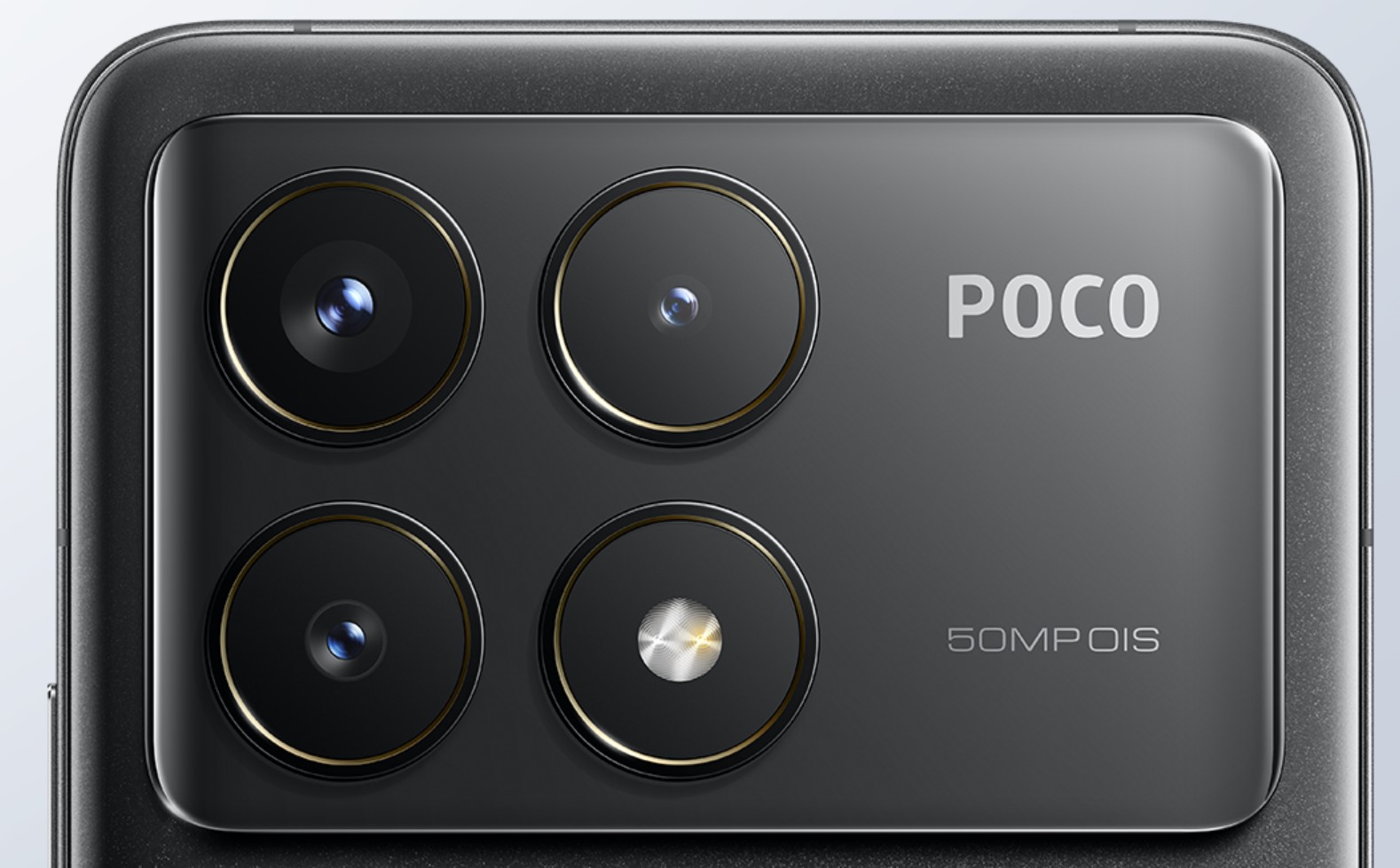
It may be a tri-sensor, but the primary sensor does all the work. It is a 50MP Omnivision OVX8000 (essentially an OV50E) with OIS, which Xiaomi has only used. The 8MP Ultrawide Sony IMX355 is limited to fixed focus, and the 2MP fixed focus GalaxyCore GC02M1 is for bokeh depth.
The secret sauce is the considerable AI capabilities of the SD8 Gen 2; together with the sensor, they take far better shots than similar competitors.
It takes excellent daylight and office light photos with superb detail and minimal noise. HDR definition is excellent.
I was impressed with Night mode – it adds so much to an already decent <40 lumens shot.
Videos are sharp and detailed in 4K@24fps – 60fps has a little softness. The 8K mode is more for bragging rights. Our advice, as always, is to shoot in 1080p@30 or 60fps with full OIS/EIS and HDR.
Camera test shots











Camera Specs
| Rear Primary | Wide |
| MP | 50MP bins to 12.5MP |
| Sensor | Omnivision OVX8000 (based on OV50E) |
| Focus | Multi-directional PDAF |
| f-stop | 1.8 – bright |
| um | 1 bins to 2 |
| FOV° (stated, actual) | 70.5 to 82.9° |
| Stabilisation | Gyro EIS and OIS (depends on video or still resolution) |
| Zoom | 10X and 4.2X crop factor – Maximum 6X digital |
| Rear 2 | Ultrawide |
| MP | 8MP |
| Sensor | Sony IMX355 |
| Focus | Fixed |
| f-stop | 2.2 |
| um | 1.12 |
| FOV (stated, actual) | 120° |
| Stabilisation | No |
| Zoom | No |
| Rear 3 | Macro |
| MP | 2MP |
| Sensor | GalaxyCore GC02M1 |
| Focus | Fixed |
| f-stop | 2.4 |
| um | 1.75 |
| FOV (stated, actual) | Narrow |
| Stabilisation | No |
| Zoom | No |
| Special | It uses the Xiaomi camera app, which appears to do much of what the Google Camera app does. It has a comprehensive Pro mode, Document mode (B&W and Colour), Ultrawide, Portrait, Photo, Video, Macro, and Night. You can shoot in 50MP with no post-processing. |
| Video max | 8K@24fps – no OIS/EIS or HDR 4K@60 OIS 1080p@60 OIS/EIS/HDR |
| Flash | Dual |
| Auto-HDR | Yes |
| Burst shot mode 2.0 50MP mode Film Camera Documents mode Pro mode Panorama Motion capture Night mode Portrait mode Long exposure HDR Short film Slow motion Steady Video Video teleprompter | |
| QR code reader | Yes |
| Night mode | AI |
Xiaomi POCO F6 Pro front camera
Selfies are fine. The 16MP sensor bins to 4MP to allow for AI post-processing. You lose some details, but the colours and skin tones are accurate.
| Front | Selfie |
| MP | 16MP bins to 4MP |
| Sensor | Omnivision OV16A1 |
| Focus | Fixed |
| f-stop | 2.4 |
| um | 1 bins to 2 |
| FOV (stated, actual) | 70.9 to 83.4° |
| Stabilisation | No |
| Flash | Screen fill |
| Zoom | Crop factor 7.5X |
| Video max | 1080p@60fps |
| Features | Front camera photography features Night mode Portrait mode Film Camera HDR Palm Shutter Time burst |
Cybershack’s view – Xiaomi POCO F6 Pro – fabulous specs, performance and value, but it is not for everyone
The more I explored this device, the more impressed I became. It is almost perfect, apart from a few missing things.
- eSIM (not a deal breaker unless you use eSIM as I do)
- USB-C 3.2 Gen 1 or 2 with Alt DP 1.4 and mountable external SSD storage (not a del breaker unless you need this)
- IP 68 – IP54 is not enough at this price
- Qi charging (not a deal breaker)
Finding any fault with the hardware is tough, but HyperOS does not impress me. It is comprehensive, perhaps too much so, and has a learning curve many will not appreciate.
So, my one-line summary is that it is easily the best value for speeds and feeds, and the tech-savvy will love it.
Xiaomi POCO F6 Pro rating summary
| Ratings | 2024 ratings use 70/100 pass mark |
| Features | 85 |
| It is fully featured on a ‘speeds and feeds’ basis, albeit with the 2023 powerhouse SoC. At $999, you may expect things like e-SIM, Qi, and USB-C 3.2, but they are not deal breakers. It has possibly the best screen you will see this year. The camera is well above social media class. | |
| Value | 85 |
| It is by far the most feature-rich phone in the $900-999 bracket. The closest is the $1099 Nothing Phone 2, SD8+ Gen 1, 12/512GB, or the $899 Xiaomi Redmi Note 13 Pro+, MediaTek Dimensity 7200 Ultra, 12/512 GB. | |
| Performance | 85 |
| It was an inspired choice to save some money. We were raving about the SD8 Gen 2 performance this time last year. | |
| Ease of Use | 70 |
| It loses points due to the heavy Android 14 HyperOS User Experience and the bloatware, but you can master the OS and delete it. If you are tech-savvy, it won’t bother you. | |
| Design | 85 |
| I like it. The camera ‘bump’ is nicely symmetric and stops the table’s wobble, as does the black and white marble-like, gently curved back. | |
| Rating out of 10 | 82 |
| Final comment | This is my first Xiaomi POCO review, and I look forward to more. Hardware-wise – speeds and feeds – you cannot beat it. HyperOS is not focused on export markets like Australia. |
Xiaomi POCO F6 Pro
$999Pros
- Well-made and has a nice design
- The extremely bright 12-bit/68B colour 120Hz AMOLED is class-leading—well above the much more expensive Samsung S24 Ultra.
- Reasonable 2+3+4 warranty/OS/security patch policy
- Decent full-day battery life and strong phone reception.
- The most rich-featured phone for the price.
Cons
- HyperOS over Android has a learning curve and is too Chinese market-oriented.
- No eSIM - not a deal breaker to most
- No Qi - not a deal breaker to most
- Only USB-C 2.0 - shame as videographers and vloggers won’t use it.
- Yet to prove the company and its support in Australia.








